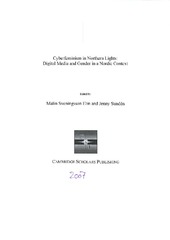| dc.description.abstract | This article discusses how the discourse of computers developed in Norwegian culture between 1980 and 2000 based on empirical material from the largest Norwegian newspaper, Aftenposten. The discourse analysis illustrates how a number of discursive logics contributed to the construction of a masculine discourse of computers; First, a pattern of visibility and invisibility made men the visible computer users and experts. Second, an "intersection rhetoric" allowed arguments from one context to be used as valid explanations for completely different contexts. Third, most people did not really know what they could use a PC for in the early 1980s. Thus an artificial need was created, based on a false pretence, or a flop. Fourth, when the hegemonic discourse was challenged through stories about otherwise invisible gender-technology relations, it was met with doubt, disregard, or even contradiction, leaving the hegemonic discourse intact. | en_US |
